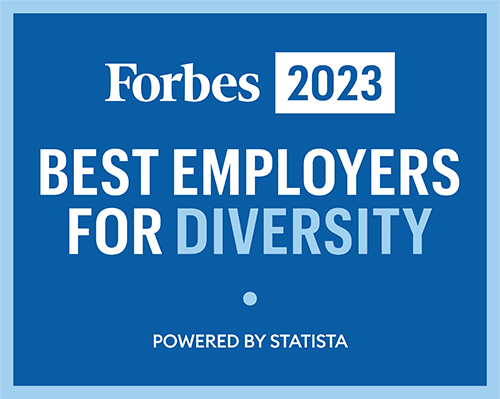Create a Place to Work, Not Just a Workplace
Workplace inclusion should include offices that allow all employees to work within their best environment. When you think about optimal work environments, they offer privacy and quiet that allow people to focus on the task at hand. The reality, however, is that open floor plans are the complete opposite of the optimal work environment. 21st century research on open offices begins around 2014 with a study that reported 70% of offices having open floor plans which were described as distracting, noisy, and too public for effective work. The numbers are on the side of otherwise diverse workers who are being forced into the en vogue open office concept.

Better for Optics
A Fast Company article published early this year gives a great overview of the history and popularity of open work spaces. As secretarial pools with their noisy clackity-clack of typewriters came to the forefront in the 1940’s, the open office concept made sense. Google followed suit when they renovated their headquarters.
“The attitude was: We’re inventing a new world, why do we need the old world?” Wilkinson says. With Google’s rise, his vision for a collaborative workplace took off. “We had [companies] come to us and say, ‘We want to be like Google.’ They were less sure about their own identity, but they were sure they wanted to be like Google.”
The appreciation for the aesthetic made designers like Frank Gehry popular in Silicon Valley. Facebook chose Gehry to design their office in 2015. When Facebook CEO, Mark Zuckerberg, announced the design, he said, “The idea is to make the perfect engineering space: one giant room that fits thousands of people, all close enough to collaborate together”.
The continuation of the now long-term preference came to show that the companies employing the Silicon Valley style were doing something new, improving productivity, and encouraging collaboration.
But, Budget
As organizations clamored to make their own statement by using the famed office layout, they enjoyed another benefit — cost savings. The real impetus behind the non-software related .com boom was that they were a way for startups working on shoestring budgets to buy unfinished lofts, bring in office furniture that encouraged the benefits of collaboration, and use the existing wiring for utilities. “Out of necessity, an aesthetic was born.”
The Real Cost
The history is completely understandable, isn’t it? How often have we been between a rock and a hard place and had to sacrifice satisfaction for savings? This is certainly the case for the open office concept.
Harvard Business School published a study in 2018 that showed that despite the benefits to businesses, what organizations make up for financially using open office concepts, they lose in productivity and satisfaction.
The study showed that in an open office environment:
- Face-to-face interaction is reduced by 70%
- Email messaging is increased by 50%
Perhaps this is why employees and even Mark Zuckerberg himself are (reportedly) disappointed in their work spaces — the Fast Company article reports that despite his pride in the world’s largest open floor plan and his famous plain white desk in it, Zuckerberg “has a private ‘conference’ room, where he is rumored to spend much of his time”.
Even the Silicon Valley start ups were bemoaning their situation. “Those places were terrible,” says Joel Spolsky, who cofounded Fog Creek Software in 2000 and is currently the cofounder and CEO of Stack Overflow. “They were so loud, because there were no drop ceilings. It was painful for everybody.
With the celebrated collaboration being proven a myth, we need to do something that we should be doing anyway — asking what is best for our teams.
The Harvard study showed that open work spaces reduce the time needed for thinking — remember thinking, about the task at hand, how important it is? The noise is distracting. And, anyone who has worked in an open office knows that it is a rare thing to find the right temperature and light for comfort. What does it say when leadership has their own “conference room” that is quiet and climate controlled? So, not only do is the myth of productivity busted, but there is frustration with leadership’s “do as I say, not as I do” attitude.
In taking a traditional approach to workspaces by choice or necessity, you may be expecting the creativity and modern work from your team, but you’re not going to get it. Your team is diverse in talents and the ways they work, that is, how they get to the results you hired them for. Ignoring the diverse ways they work, you are sacrificing the satisfaction of your team for the savings of your organization. Ask yourself if it’s a worthwhile investment. Take a modern, creative approach to the issue. It is likely you’ll find the results you’re looking for in productivity which will boost both your satisfaction and savings.
Shift Points
- Open work spaces were designed to maximize productivity of repetitive work which is very different than the work we need done today.
- Open offices are wise financially but are shown to decrease employee effectiveness and satisfaction.
- Dynamic, collaborative, and creative workers need options that help them achieve their best productivity.

